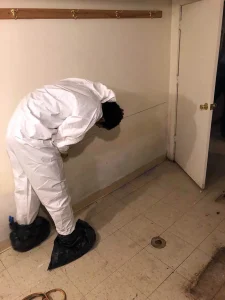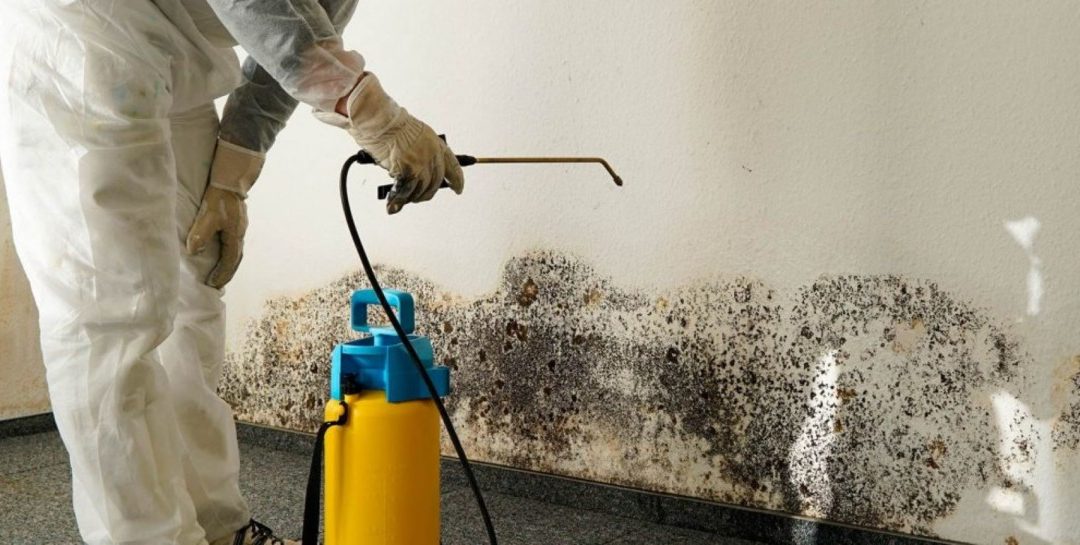Understanding the Health Risks Associated with Mold Infestation
Mold infestation is a common issue that many homeowners face, often underestimated in its potential health hazards. While mold may seem like a mere inconvenience or aesthetic problem, its presence can pose serious risks to human health. In this comprehensive guide, we will delve into the health risks associated with mold infestation, exploring the dangers it poses and providing insights into effective prevention and remediation strategies.
Understanding Mold and Its Growth
Mold is a type of fungus that thrives in damp, humid environments. It reproduces through airborne spores that can easily spread and colonize new areas. Common indoor molds include Aspergillus, Penicillium, and Stachybotrys chartarum, also known as black mold. Mold growth typically occurs in areas with excess moisture, such as bathrooms, kitchens, basements, and areas affected by water damage or leaks.

The Health Risks Associated with Mold Infestation: Understanding the Dangers
Health Risks of Mold Exposure
Respiratory Issues
Allergic Reactions
Allergic reactions are a common consequence of mold exposure and can manifest in a variety of ways. Mold spores contain allergens that can trigger allergic responses in susceptible individuals. Symptoms of allergic reactions to mold may include sneezing, runny or stuffy nose, itchy or watery eyes, coughing, and skin irritation. These reactions occur when the immune system identifies mold spores as foreign invaders and mounts an immune response to eliminate them. Individuals with allergies or asthma are particularly sensitive to mold allergens and may experience more severe symptoms. Identifying and mitigating exposure to mold is crucial for managing allergic reactions and maintaining overall health and well-being.
Fungal Infections
Toxic Mold Syndrome
Toxic Mold Syndrome, also known as mold-related illness or mycotoxicosis, is a serious health condition that can result from exposure to certain types of mold and their mycotoxins. Stachybotrys chartarum, commonly referred to as black mold, is one of the most notorious molds associated with toxic mold syndrome. When mold spores are inhaled or come into contact with the skin, they can release mycotoxins that may lead to a range of symptoms. These symptoms can include fatigue, headaches, dizziness, memory loss, difficulty concentrating, respiratory issues, and skin rashes. Toxic mold syndrome can have debilitating effects on a person’s physical and mental well-being, impacting their quality of life and daily functioning. Individuals experiencing symptoms of toxic mold syndrome should seek medical attention promptly and take steps to minimize exposure to mold-infested environments to prevent further health complications.
Irritation of the Eyes, Nose, and Throat
Prevention and Remediation Strategies
Address Moisture Issues
Monitor Indoor Humidity Levels
Regular Inspection and Maintenance
Regular inspection and maintenance play a pivotal role in preventing mold growth and addressing potential moisture issues before they escalate. By conducting routine inspections of the home, homeowners can identify signs of water damage, leaks, or areas prone to moisture accumulation. This includes checking for dripping faucets, water stains on ceilings or walls, and condensation buildup around windows and doors. Additionally, inspecting areas with poor ventilation, such as bathrooms, basements, and attics, can help uncover hidden moisture problems. Promptly addressing any issues identified during inspections, such as repairing leaks, improving ventilation, or sealing cracks and gaps, can help prevent moisture from entering the home and creating conditions conducive to mold growth. By prioritizing regular inspection and maintenance efforts, homeowners can proactively mitigate the risk of mold infestation and safeguard the health and integrity of their home.
Prompt Cleanup of Water Intrusion
Prompt cleanup of water intrusion is essential in preventing mold growth and minimizing damage to the home. Whether it’s a plumbing leak, roof leak, or flooding event, water intrusion can create an environment conducive to mold growth within as little as 24-48 hours. Therefore, it is crucial to address water intrusion promptly to prevent moisture from seeping into building materials and promoting mold growth. Homeowners should immediately remove standing water using pumps, wet vacuums, or towels and thoroughly dry affected areas using fans, dehumidifiers, and ventilation. Additionally, removing wet materials such as carpeting, insulation, and drywall may be necessary to prevent mold growth and structural damage. By taking swift action to clean up water intrusion, homeowners can minimize the risk of mold infestation and protect the health and integrity of their home.
Proper Ventilation
Use Mold-Resistant Materials
Using mold-resistant materials is a proactive approach to prevent mold growth and mitigate the risk of moisture-related issues in homes. Mold-resistant materials are specially designed to inhibit the growth of mold and mildew, making them ideal for areas prone to moisture, such as bathrooms, kitchens, and basements. These materials, which may include mold-resistant drywall, paint, insulation, and flooring, are engineered to resist moisture absorption and discourage mold growth. By incorporating mold-resistant materials into home construction or renovation projects, homeowners can create a protective barrier against mold infestation and ensure long-term durability and safety. Additionally, choosing mold-resistant materials simplifies maintenance efforts and reduces the likelihood of costly remediation projects in the future. Overall, investing in mold-resistant materials is a proactive step towards creating a healthier and more resilient living environment.
Professional Mold Remediation
Professional mold remediation is a critical component of comprehensive prevention and remediation strategies for addressing mold infestations effectively. Certified mold remediation specialists have the expertise, equipment, and training to safely and efficiently remove mold and restore indoor environments to a healthy state. Professional mold remediation involves thorough inspection, assessment of the extent of mold damage, containment of affected areas to prevent further spread, and meticulous removal of mold-infested materials. Additionally, professionals use specialized techniques such as HEPA filtration, antimicrobial treatments, and air scrubbing to eliminate mold spores and ensure thorough remediation. By entrusting mold remediation to professionals, homeowners can have peace of mind knowing that the issue is being addressed properly, reducing the risk of recurring mold problems and safeguarding the health and well-being of occupants.
Mold infestation poses significant health risks to individuals exposed to its spores and toxins. From respiratory issues and allergic reactions to toxic mold syndrome, the health consequences of mold exposure can be severe and long-lasting. Understanding the dangers of mold infestation is essential for homeowners to take proactive measures to prevent mold growth and address moisture issues promptly. By implementing effective prevention and remediation strategies, homeowners can protect their health and maintain a safe and healthy indoor environment for themselves and their families.

